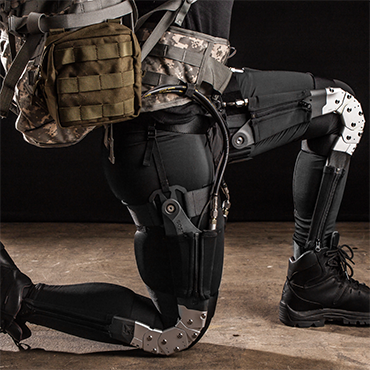6 sci-fi DARPA projects

FCW focuses on the business of federal technology, but really — who doesn't like lasers and robots?

The Warrior Web's exoskeleton prototype. (DARPA photo)
1. Super-fast fiber for next-gen sensors
Fiber-optic communication is fast, but the glass fiber is actually a limiter of data-transmission speeds. In July, officials at the Defense Advanced Research Projects Agency announced that they have radically improved the design of "hollow-core" fiber to boost performance and have developed design and production capacity for that fiber here in the United States.
2. Atlas, the robotic pupil
DARPA's Virtual Robotics Challenge entered a new phase in July, when Atlas — a 6-foot-2-inch, 330-pound robot developed by Boston Dynamics — was introduced to seven teams tasked with training it for disaster-response scenarios. The end goal? "Supervised autonomy" so that Atlas and its successors can step into situations too dangerous for humans. (Click the YouTube video embedded below to see Atlas in action.)
3. Giving 'iron man' a whole new meaning
U.S. warfighters are a strong bunch, but the Warrior Web project uses high-tech exoskeletons to boost their endurance and carrying capacity. The undersuits, now in development, protect joints and reduce fatigue while remaining "comfortable, durable and washable" — all without drawing more than 100 watts of power.
4. Getting past the password
We don't need DARPA to know that passwords — often poorly chosen and written down on Post-it notes — are the weak link of cybersecurity. But the agency's Active Authentication program has expanded from its initial focus on desktop security to tackle mobile devices as well. And forget fingerprints — the research here is on "behavioral biometrics focused on the user's cognitive processes."
5. LADAR: Like radar, but with lasers
Laser detection and ranging, or LADAR, is essentially high-definition radar that provides remarkably detailed 3-D mapping. The technology is not new, but in the past, the equipment has been too bulky and slow to be practical. Now, however, DARPA researchers have gotten the required 2-D optical phased array onto a chip the size of the head of a pin. In addition to paving the way for LADAR innovation, DARPA officials say, the new chip might "have applications for biomedical imaging, 3-D holographic displays and ultra-high-data-rate communications."
6. Devices with a disappearing act
For military technology, the emphasis is often on ruggedness and durability, but what happens when that equipment is captured or left behind? DARPA's Vanishing Programmable Resources project is working on the "Mission: Impossible" fix: crafting mil-spec electronics that are also "capable of dissolving into the environment around them." Water-soluble electronics have been possible for some time; the goal now is to trigger their destruction in other environmental conditions and by remote signal.


